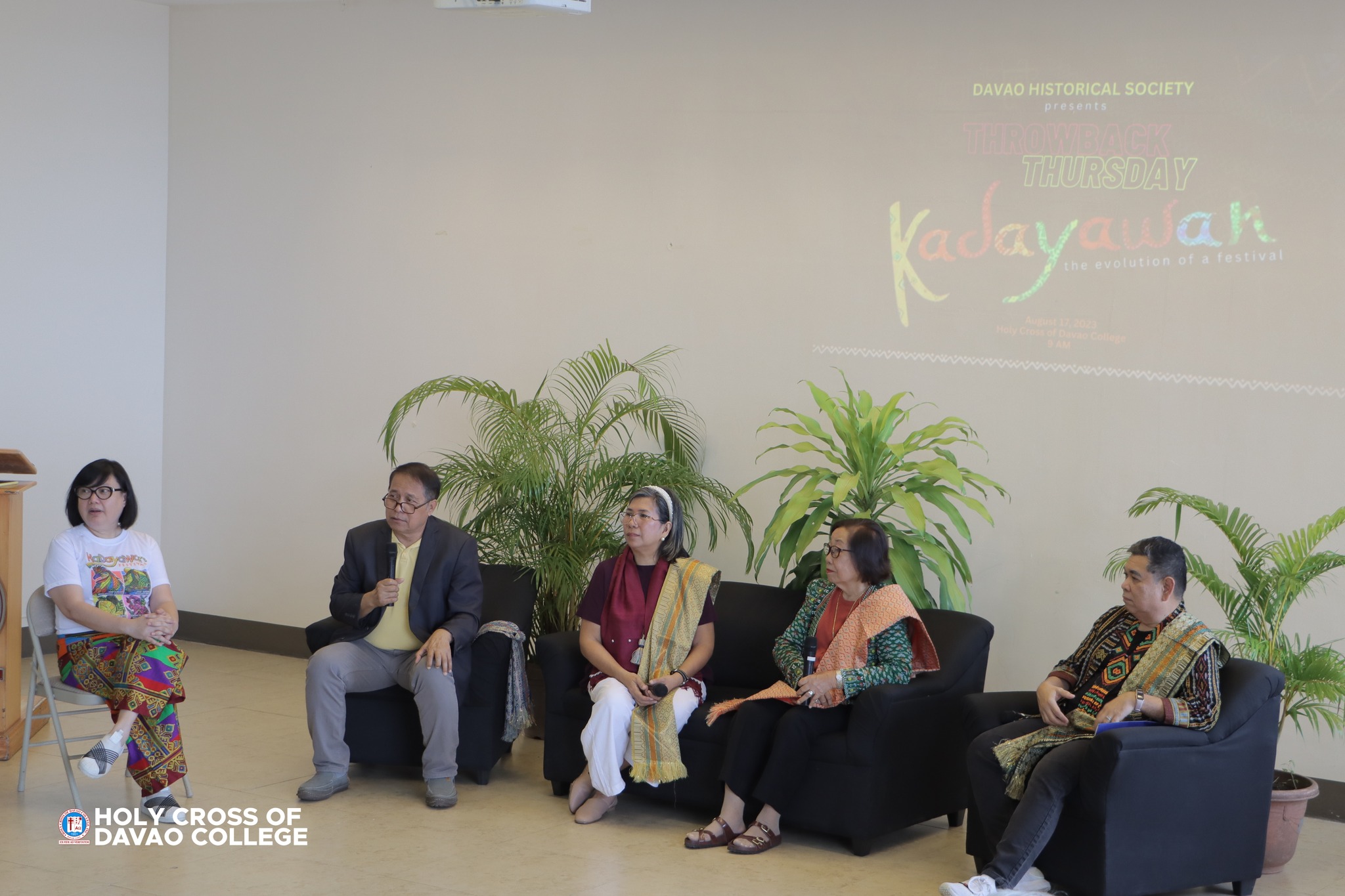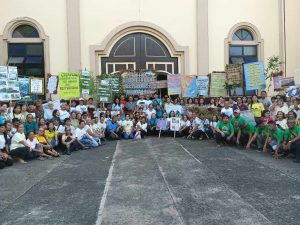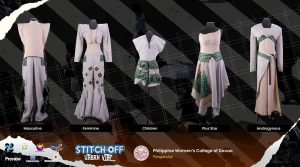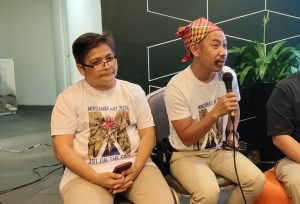THE DAVAO Historical Society (DHS) partnered with the Holy Cross of Davao College’s Institute of Davao Studies to host Throwback Thursday, commemorating the history of Kadayawan and its development up to the present.
Held at Holy Cross of Davao College on Aug. 17, the momentous event was graced by guests who contributed their knowledge and expertise to give a more complete picture of the Kadayawan as a celebration.
The guests invited to the event were Jason Arceo, Museo Dabawenyo’s officer-in-charge; Maan Doromal, Davao City Chamber of Commerce and Industry, Inc. secretary general; Oscar Casaysay, National Commission for Culture and the Arts (NCCA) executive director; Susan Antepuesto, Amalia Cabusao Bandiola, DHS president; Patmei Ruivivar, DHS vice president; Councilor Pilar Braga, Charita Puentespina, Ed Fernandez, DHSl members, and HCDC students.
Noelvic Deloria SC, HCDC president, thanked the people behind the event as this highlights the important role history plays in society.
“Look, we have to remind our students of the significance, and the beauty of what history can bring to us. Not just Holy Crossians but also different people from different places,” Deloria said.
One of the key persons who shared memories of Kadayawan when it was still known as ‘Apo Duwaling’, was Eduardo ‘Ed’ Fernandez, presently known as the cluster head of the Philippine Sports Commission (PSC) Mindanao.
“From there, we started a joke, nga amoang itunong sa August or September, because of the abundance of fruits. During the press conference, naa’y usa ka media nga nakita nako, nga miingon og kung prutas-prutas lang, dili kaayo mu-click, kay mawala rana,” Fernandez said.
Apo Duwaling is an iconic name which stands for the three symbols that Davao City is known for—Mt. Apo, Durian and Waling-Waling.
Fernandez mentioned that he remembered one media outlet that told him that Apo Duwaling is much better when it has a religious fervor, something that serves as a “thanksgiving from God, as well as the culture and arts, which adheres to the DNA of Davao City”.
Susan Magno Antepuesto was one of the creative forces of Kadayawan in promoting the use of indigenous fabrics and nurturing young local designers from the early nineties. She is also a pillar of Urug Ethnika and Moda Mindanao, which is now known as the Habi Mindanao. She took part in preserving the Waling-Waling, also known as Devanda Sanderiana, as she wants to promote it locally and internationally.
“The Kadayawan started when three of us girls, I was the youngest among them, went to the city mayor and asked him to form a group to handle Kadayawan. He told us, ‘go ahead.’ And because I was the youngest, I said, I’m going to take the lead,” Antepuesta said.
Antepuesto shared that they were also the first-ever to handle the flower float parade also known as Pamulak sa Kadayawan at present, Hiyas ng Kadayawan, and a journal publication about Kadayawan.
Casaysay, also known as Oca, the executive director of NCCA, was one of the prime movers of Kadayawan under the then Mayor Rodrigo R. Duterte, and served as executive director of the award-winning Kaliwat Performing Artist Collective, also had his fair share of Kadayawan stories.
“While we crafted a vision Twenty-Twenty for Davao City, kasama ‘dun ang vision for tourism. Ang ma-remember ko ang first line is ‘We would like to make Davao City the premier tourism destination of the region,” Casaysay said.
Casaysay said Hiyas sa Kadayawan was then called Biyaning, which means to select the princess among the Lumads (indigenous peoples).
“And then the so-called intellectuals said that we shouldn’t select by contest ang princess, it is by lineage, by blood,” Casaysay said.
In 1997, the organization came up with ‘Hiyas sa Kadayawan’, to separate it from beauty contests, and to further promote Davao City as rich in Mindanao textile, where Urog Ethnika was also born.
Susan Magno Antepuesto, former tourism officer of Davao City, shared her involvement during the restoration of documents of IPs in Davao City.
“Lahat gustong umangat ang Davao. That’s the spirit of Davao that time,” Antepuesto said.
The event also highlighted the memorandum of agreement signing between the Davao Historical Society and the HCDC Institute of Davao Studies, as both parties committed to providing a platform to deepen the understanding of scholars, educators, students, and the public, of Davao City’s history and culture.
Photo courtesy of Holy Cross of Davao Collect




